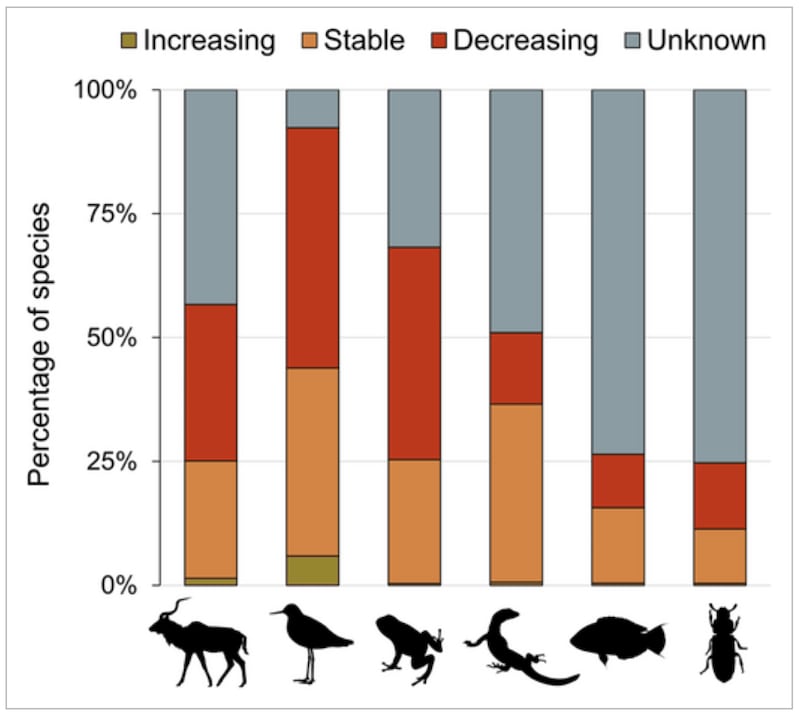With only 3 per cent of global species increasing in number the world appears to be entering its sixth mass extinction period brought about entirely by humans, according to a new study.
The paper, published in Biological Reviews, claims the global loss of biodiversity caused by human industrialisation is significantly more alarming than previously thought.
According to its authors at Queen’s University Belfast, while 52 per cent of species are either increasing or stable, almost half (48 per cent) are now in decline.
Growing consensus
Describing the trend as “one of the most alarming” effects of human behaviour, the researchers say widespread loss of biodiversity has reached unprecedented degrees prompting a “growing consensus that life on Earth is entering its sixth mass extinction. However, compared with the previous five such events, this mass extinction is the first directly induced by a single species — humans.”

Although measurement has traditionally leaned on the Red List of Threatened Species, produced by the International Union for Conservation of Nature, the paper’s authors say such an exclusive focus may actually underestimate the scale of the problem.
Their paper — More losers than winners: investigating Anthropocene defaunation through the diversity of population trends — found 33 per cent of species, classed by the red list as “non-threatened”, are declining.
The study used population-trend data for more than 71,000 animal species, including mammals, birds, reptiles, amphibians, fishes and insects, in an effort to produce a comprehensive global-scale assessment.
“Biodiversity is undergoing a period of demographic imbalance, whereby the level of species experiencing decreasing populations outweighs that of population increases by an alarming margin, it concluded.
“Given the unprecedented speed at which global environments are being degraded by human activities, the number of populations that are collapsing in response to these rapid environmental changes is far higher than the number of species that are adaptively ‘catching up’ with those rapid changes.”
‘Pivotal time’
Falling populations tend to be concentrated in the tropics, while population stability and increases are found more in temperate regions. However, such patterns are determined by data availability, which in some cases — insects and fish — are significantly constrained.

Of species in decline, but not classed as threatened, the research found that if such trends remain unabated, an additional 2,136 could become threatened in the near future.
“The time to recognise this phenomenon as occurring has already passed,” the authors note. “And now is the pivotal time to protect the future integrity of biodiversity, and thereby the persistence of humanity.”












